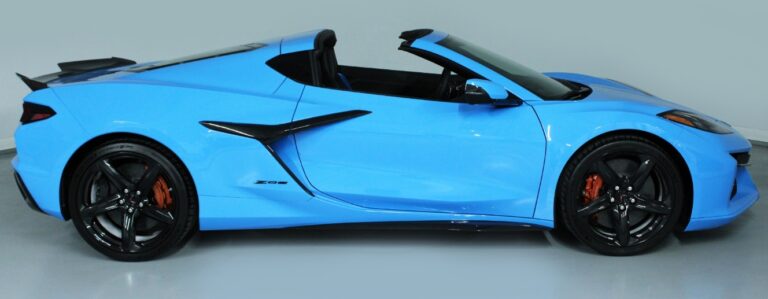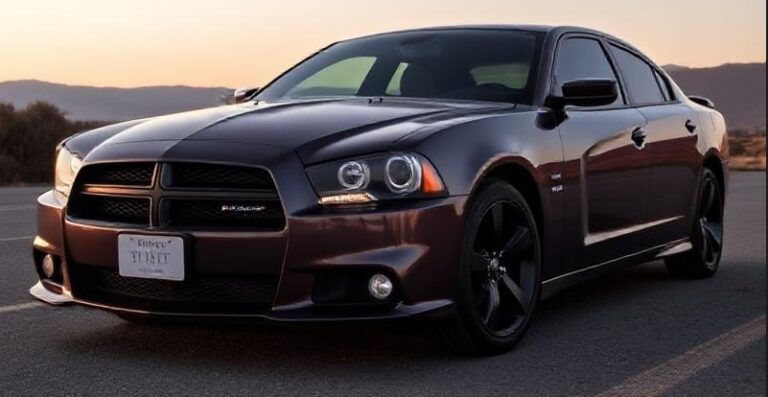The Evolution of the Bugatti EB 110
Introduction
The Bugatti EB 110 stands as one of the most iconic supercars of the 1990s, representing a renaissance for the legendary French automaker after its long hiatus. Launched in the early 1990s, the EB 110 was a technological marvel and a symbol of luxury, engineering excellence, and exclusivity. Its development, production, and subsequent variants showcase a fascinating chapter in automotive history.
Origins and Development (Early 1990s)
After the original Bugatti company ceased operations in the 1950s, the brand was dormant until Italian entrepreneur Romano Artioli acquired the rights in the late 1980s. Determined to revive the marque, Artioli set about creating a modern supercar that would re-establish Bugatti’s reputation for engineering excellence.
Development of the EB 110 began in 1987, with a team led by engineer Roberto Modal is and designer Romano Artioli himself. The project aimed to produce a supercar that combined cutting-edge technology with luxury and exclusivity. The name “EB 110” was chosen to honor Ettore Bugatti, the founder, and the 110th anniversary of his birth.
The car was officially unveiled in 1991 at the Tokyo Motor Show, marking Bugatti’s return to the automotive scene.
Production Years and Overview
The Bugatti EB 110 was produced between 1991 and 1995. During this period, several models and trim levels were introduced, each refining and expanding upon the original concept.
Base Model: EB 110 GT (Gran Turismo)
- Production Years: 1991–1995
- Introduction: The initial model introduced to the market.
- Design & Features: The EB 110 GT was a mid-engine, four-wheel-drive supercar featuring a sleek and aerodynamic body designed by Romano Artioli. It was powered by a 3.5-liter twin-turbocharged V12 engine.
- Performance: The GT produced approximately 553 horsepower and 480 lb-ft of torque, allowing it to accelerate from 0-60 mph in around 3.2 seconds and reach a top speed of about 213 mph (342 km/h), making it one of the fastest cars of its time.
- Production Numbers: Approximately 140 units were built.
EB 110 Super Sport (SS)
- Introduction: 1992
- Purpose: The SS was a higher-performance variant developed for enthusiasts seeking even greater power and speed.
- Engine & Power: The SS featured an uprated version of the twin-turbo V12, producing 602 horsepower and 481 lb-ft of torque.
- Performance: The increased power enabled a top speed of about 218 mph (351 km/h) and 0-60 mph acceleration in roughly 3.14 seconds.
- Design & Features: The SS had subtle aerodynamic enhancements, including a more aggressive rear wing and revised bodywork for improved stability at high speeds.
- Production: About 30 units of the EB 110 SS were built, making it extremely exclusive.
Special and Limited Editions
Throughout its production run, Bugatti introduced various special editions to celebrate milestones or to offer unique variations to collectors:
EB 110 LM (Le Mans)
- Purpose: A racing-inspired version, developed for homologation purposes to participate in racing events.
- Production: Limited to about 3 units.
- Features: Fewer luxury appointments, focus on weight reduction, and racing features such as a stripped interior and enhanced aerodynamics.
EB 110 GT “Cannes” Edition
- Details: A bespoke version with unique paintwork and interior trim, created for select customers.
Design and Engineering Innovations
The EB 110 was groundbreaking in many respects:
- All-Wheel Drive: One of the earliest supercars to feature permanent all-wheel drive, improving stability and handling.
- Carbon Fiber Monocoque: Pioneering use of carbon fiber for the chassis, reducing weight and increasing rigidity.
- Twin-Turbocharged V12: Developed in partnership with Lamborghini’s engine division, the 3.5-liter V12 was one of the most advanced of its era.
- Active Aerodynamics: The car incorporated adjustable rear wings and aerodynamic features to optimize downforce and stability at high speeds.
- Transmission: A six-speed manual transmission, with some models featuring an electro-hydraulic clutch for smoother engagement.
.
THIS might be a great place to get your new car from!
Or for those who are into the “car flipping” business, here’s an excellent resource for you!

.
End of Production and Legacy
By 1995, Bugatti ceased production of the EB 110 due to financial difficulties faced by the company. Despite its relatively short production span, the EB 110 left an indelible mark on automotive history as a technological marvel and a symbol of exclusivity.
Total production is estimated at around 140 units of the GT, with approximately 30 units of the SS variant, alongside a handful of special editions like the LM.
In the years following, the EB 110 has become highly collectible, appreciated for its engineering, rarity, and the role it played in re-establishing Bugatti as a high-performance automotive brand.
Revival and Influence
The EB 110’s legacy persisted, influencing subsequent models and inspiring modern Bugatti supercars like the Veyron and Chiron. Its pioneering technologies, such as carbon fiber construction and all-wheel drive, became staples in supercar development.
In 2018, Bugatti celebrated the 25th anniversary of the EB 110 with a special edition called the Bugatti EB 110 Super Sport Special Edition, commemorating the original’s performance and exclusivity.
Conclusion
The Bugatti EB 110 remains a milestone in automotive history, embodying innovation, performance, and luxury. Its evolution from the initial GT model to the high-performance SS and special editions showcases a dedicated pursuit of engineering excellence. Despite its limited production run, the EB 110’s influence endures, cementing its place as a true supercar legend.







